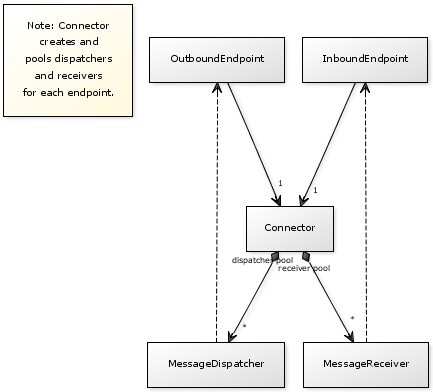
Connecting Using Transports
A transport is responsible for carrying messages from application to application in the Mule Runtime framework. In EIP terms, transports are used to implement message channels and provide connectivity to an underlying data source or message channel in a consistent way. For example, the TCP transport handles messages sent via the TCP protocol, whereas the File transport reads and writes files placed on the server’s file system.
A transport also provides a set of functionality that handles the messages on a specific channel. This includes specific transformers like the <body-to-parameter-map-transformer> in the HTTP transport and other specific elements like the various filename parsers for the File transport.
The heart of a transport is the connector. The connector maintains the configuration and state for the transport. When receiving messages, a connector uses a message receiver, which reads the data, packages it as a message, and passes it to the first message processor in a flow. When sending messages, the connector uses a message dispatcher, which receives the messages and routing instructions from the previous Message Processor in a flow and sends the message to the next endpoint or external service.
Transports are configured via endpoints in Mule. See Endpoint Configuration Reference for an explanation on how this is done.
A list of available transports and the reference topic including example configuration for each specific transport bundled with Mule can be found in the Transport Configuration Reference.




